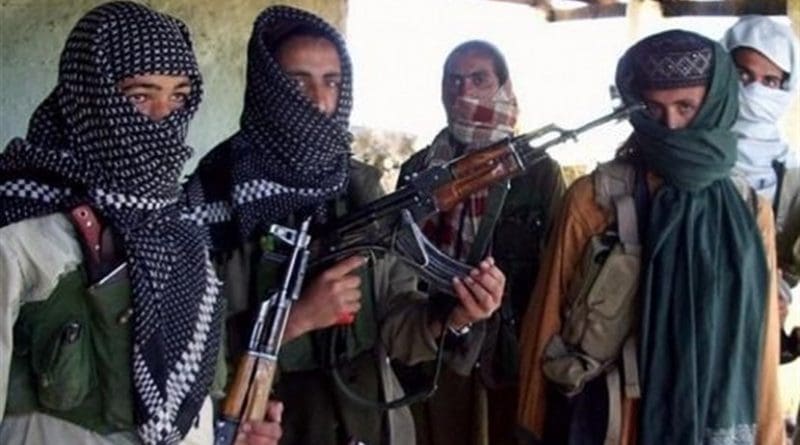By Neelapu Shanti*
 The increasing spate of attacks in Afghanistan by the Taliban once again highlights the grim security situation and extremist group’s true intentions, amid the seventh round of peace talks between the United States and the Taliban in Qatar.
The increasing spate of attacks in Afghanistan by the Taliban once again highlights the grim security situation and extremist group’s true intentions, amid the seventh round of peace talks between the United States and the Taliban in Qatar.
A powerful car bomb explosion by the Taliban on Monday (July 1) in the heart of Kabul city recalled the radical increase of bloodshed in both wars and everyday conflicts. The spiralling attacks in Afghanistan show that the density of everyday violence is proportional to the country’s quest for peace, fuelled by terrorism. Monday’s deadly explosion killing around 40 people and injuring more than 100, including women and children, spells the Taliban’s irrational thirst for a victorious war in Afghanistan.
The epidemic culture of violence in Afghanistan is reflected in the reports of the United Nations Assistance Mission in Afghanistan (UNAMA). From January 1 to March 31, 2019, UNAMA documented 1,773 civilian casualties (581 deaths and 1,192 injured), including 582 child casualties (150 deaths and 432 injured).
The ravaged history of Afghanistan’s foreign invasions and external influences fuelling terrorism makes it difficult for the country to discover its national identity. Viewing the recent developments, the Taliban has come to the table to negotiate peace in Afghanistan without involving the Afghan government.
Peace and increasingly violent terror attacks by the Taliban are going hand in hand. Vicious extremist attacks, withdrawal of US troops, postponement of elections and inconclusive peace negotiations by the Taliban are subtle signals for Afghanistan in shifting the country’s agenda to an ‘Afghan-led Afghan-owned’ government.
There are many signs of the Taliban’s unwillingness to restore peace in Afghanistan, with its aggressive attitude not fine-tuned with the interests of the people of the country, highlighting political contradictions.
The Taliban’s preconditions involve the withdrawal of U.S and NATO forces, an interim government and setting aside democratic law, clearly indicating that it is bargaining for peace for lethal motives and not actually for the sovereignty of Afghanistan.
The Taliban suicide bombers’ attack in Maroof district in southern Kandahar province on June 29 killed 19 government officials, including Independent Election Commission staff, who were deployed to register voters for the upcoming presidential elections on September 28. The security issue is raised at every stage, with catastrophic conditions created by Taliban factions while negotiating peace.
It is important to understand who are the major players in destabilising Afghanistan. The Taliban insurgents have been receiving external support from other countries and one among them is Pakistan, which involves the re-emergence of the Pakistan-Taliban.
Pakistan, which has been on the back foot after the Balakot attack, now wants to assert itself in the region. With the regressive Pakistani policy on Afghanistan, a variety of terrorism rears its head time and again, interfering in the political and economic integration of the South Asian region.
Pakistan’s destructive potential for state sponsorship of terrorism in Afghanistan is apparent from it giving refuge to Taliban leaders in Pakistan, the deportation of Afghan Taliban leaders and the supply of arms and ammunition to the Taliban in Afghanistan. The blurring of lines between war and peace is currently drifting in the wrong direction.
The United States’ role to end the 18 years of bloodshed in Afghanistan must bring a constructive outcome while negotiating with the Taliban. They cannot decide or completely rely on irrational ideologies of the Taliban for an absolute ceasefire. Afghan President Ashraf Ghani’s peace proposal at the Kabul Conference last year outlined a peace deal titled ‘Offering Peace: Framing the Kabul Conference,’ with a clear, altruistic motive catering for the welfare of the country and people of Afghanistan.
Ghani’s offer of a peace deal with the Taliban included (a) constitutional rights of all citizens (especially women) being ensured (b) Constitutional reforms being undertaken through constitutional provisions (c) defence and security forces and civil services functioning according to the law and (d) no armed groups with ties to transnational criminal organisations, or with state/non-state actors, seeking influence in Afghanistan, to be allowed.
A peace deal, and peace in Afghanistan, would be a distant dream if the Taliban do not give up violence. The Taliban’s intention is to re-establish their regime with the support of Pakistan and other external terrorist factions. The Taliban has to come to meaningful terms with the government through a democratic process in Afghanistan.
*About the author: The author is a journalist, formerly associated with the Afghan government
No comments:
Post a Comment